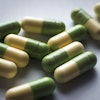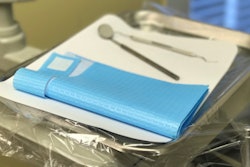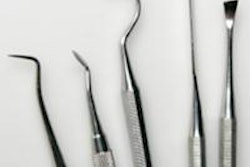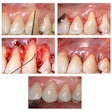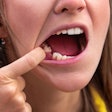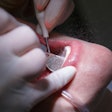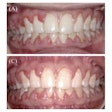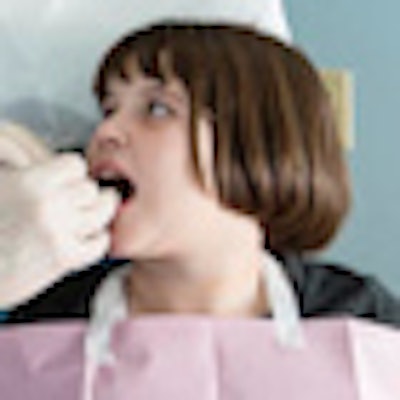
A significant proportion of dental bib clips harbor bacteria from the patient, dental clinician, and the environment even after the clips undergo standard disinfection procedures, according to a new study (Compendium of Continuing Education in Dentistry, April 2013, Vol. 34:4 [suppl]).
The study was conducted by researchers from Tufts University School of Dental Medicine and the Forsyth Institute and sponsored in part by Dux Dental, which manufactures Bib-Eze disposable bib holders.
The researchers analyzed the clips on 20 dental bib holders after they had been used on patients treated in the dental hygiene clinic at Tufts. The bib clips were sampled for aerobic and anaerobic bacterial contaminants immediately after treatment (post-treatment clips) and again after the clips were cleaned using disinfecting, alcohol-containing wipes (postdisinfection clips) according to the manufacturer instructions and the clinic's disinfection protocol.
To analyze the sampled bacteria from the bib clips, microbiologists at the Forsyth Institute used standard molecular identification techniques and a proprietary technology -- Human Oral Microbe Identification Microarray analysis -- that is designed to detect 300 of the most prevalent oral bacteria.
Although the majority of the thousands of bacteria found on the bib clips immediately after treatment were adequately eliminated through the disinfection procedure, the researchers found that 40% of the bib clips tested after disinfection retained one or more aerobic bacteria, which can survive and grow in oxygenated environments. They found that 70% of bib clips tested after disinfection retained one or more anaerobic bacteria, which do not live or grow in the presence of oxygen.
Here are some other findings from the study:
- Immediately after treatment and before the clips had been disinfected, oral bacteria often associated with chronic and refractory periodontitis were found on 65% of the clips.
- After disinfection, three of the bib clips (15%) still had anaerobic Streptococcus bacteria from the oral cavity and upper respiratory tract, while 5% of the clips still harbored at least one bacteria from the Staphylococcus, Prevotella, and Neisseria species.
- Additionally, after disinfection, nine clips (45%) retained at least one anaerobic bacterial isolate from skin.
"The study of bib clips from the hygiene clinic demonstrates that with the current disinfection protocol, specific aerobic and anaerobic bacteria can remain viable on the surfaces of bib clips immediately after disinfection," said lead researcher Addy Alt-Holland, MSc, PhD, an assistant professor in the department of endodontics at Tufts, in a press release. "Although actual transmission to patients was not demonstrated, some of the ubiquitous bacteria found may potentially become opportunistic pathogens in appropriate physical conditions, such as in susceptible patients or clinicians."
She and her co-authors hypothesized that bacteria found on bib clips after patient care could have been transferred from patients and clinicians to the clips in various ways:
- Oral bacteria present in the patient's saliva and the spray or spatter produced during dental treatments may contribute to the presence of bacteria on the disinfected bib clips.
- Bacteria can also be transferred from the gloved hands of dental practitioners to the clips prior to or during the patient's treatment.
- Bacteria can be transferred from the patient's hands to the clips if the patient touches the clip.
"The results of our analysis show that there is indeed a risk of cross-contamination from dental bib clips. The previous patient's oral bacteria could potentially still be on the clip, and the new patient has a chance of being exposed to infection by using that same bib clip," said co-author Bruce Paster, PhD, chair of the department of microbiology at the Forsyth Institute. "It is important to the clinician and the patient that the dental environment be as sterile as possible; thus it's concerning that we found bacteria on the clips after disinfection. This situation can be avoided by thoroughly sterilizing the clips between each patient or by using disposable bib holders."
In a previous study published in August 2012 by researchers at Tufts University School of Dental Medicine and the Forsyth Institute, they found that 20% to 30% of dental bib clips still harbor aerobic bacterial contaminants even after proper disinfection procedures. Rubber-faced metal bib clips were found to retain more bacteria than bib clips made only of metal immediately after treatment and before disinfection.
Four other research reports have found bacterial contamination on dental bib holders, including research conducted by U.S. infection control specialist John Molinari, the University of North Carolina at Chapel Hill's School of Dentistry Oral Microbiology Laboratory, and the University of Witten/Herdecke in Germany.
